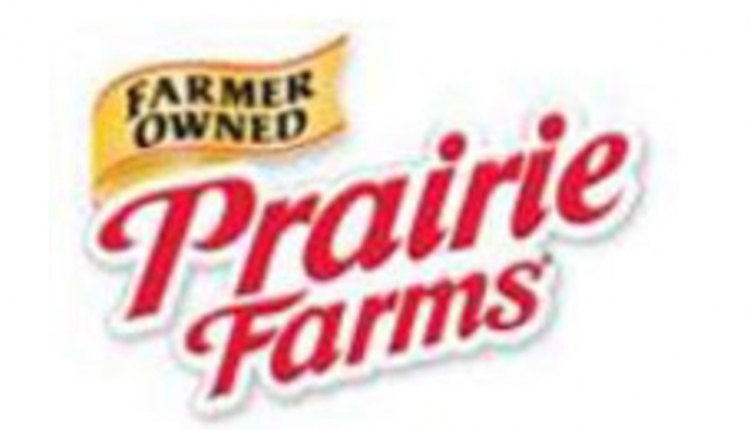The information below has been supplied by dairy marketers and other industry organizations. It has not been edited, verified or endorsed by Hoard’s Dairyman.
Market Commentary
The Cyber Economy’s Indirect Impact on PA Dairy
However, over the past 10 years, this extensive transportation network has also attracted a large number of warehouses, or “logistics centers” to the area. Proponents of logistics centers forecast that there is no end to the amount of these structures needed, as an increasing share of consumers purchase an increasing amount of product on-line. These logistic centers are located along this transportation grid in Southeast Pennsylvania for the same reason that our extensive food processing industry in located there—because half of the population of the United States can be reached within a 12 hour drive.
Some in our state’s dairy industry would say the biggest impact of these logistics centers to dairy is the amount of farmland that has been taken out of production to build these centers. However, these logistic centers are affecting the dairy industry in a much less obvious way. Anecdotal information indicates that average laborers may earn a wage of $14.50/hour. As a result, dairy farms within a reasonable commute of any of these centers find that they are faced with a minimum wage floor, not set by state government, but by local competition for laborers. If dairies are not willing to match the wage rate offered by the logistics center, it becomes increasingly difficult to recruit and retain employees.
Yet, many Pennsylvania dairies have a cost structure that is too high to compete successfully with dairies in other parts of our nation, mainly due to feed costs. Higher labor costs are not helpful to the need for competitive cost of production on our state’s dairy farms.
Markets continue to move sideways with little prospect for forecast price improvement. None of the factors that are well known-- cow numbers, expected domestic and global milk production, high dairy product inventories and current trade patterns, give much optimism for price improvement. However, a number of very tense areas of the world could cause a future disruption in a way that would change price forecasts.If price forecasts for 2018 are realized, the majority of Pennsylvania dairy producers will need to have a cost of production below $17.50/cwt in order to cash flow for the year. This fact poses a significant challenge to a number of our state’s dairies, especially as some have delayed equipment reinvestment and repairs hoping for better years.
Components the Only Game in TownDairy producers continue to focus on shipping more components as the main way to improve income. The Northeast Market Administrator’s Bulletin for September contained some interesting statistics on butterfat and protein tests on milk shipped in Order 1. Over the last 17 years, butterfat tests have increased an average of 0.14% and protein tests have increased an average of 0.11. However, those average increases do not reflect the increases observed on many well managed dairy farms in the state. During many dairy advisory team meetings, the conversation focuses on the forage quality and management needed to achieve the goal of an average of 6 lbs of components produced daily from each cow in the herd.
The Cyber Economy’s Indirect Impact on PA Dairy
While there are dairy producers in most of Pennsylvania’s counties, the majority of dairy farms are located in the southcentral / southeast portion of our state. A recent study of Pennsylvania’s dairy industry, commissioned by the Center for Dairy Excellence, indicated that the industry is continuing to grow and concentrate in the areas where it is already located. This same area of PA has a tremendous transportation network, which the dairy industry has always seen as a benefit in moving milk to market.
However, over the past 10 years, this extensive transportation network has also attracted a large number of warehouses, or “logistics centers” to the area. Proponents of logistics centers forecast that there is no end to the amount of these structures needed, as an increasing share of consumers purchase an increasing amount of product on-line. These logistic centers are located along this transportation grid in Southeast Pennsylvania for the same reason that our extensive food processing industry in located there—because half of the population of the United States can be reached within a 12 hour drive.
Some in our state’s dairy industry would say the biggest impact of these logistics centers to dairy is the amount of farmland that has been taken out of production to build these centers. However, these logistic centers are affecting the dairy industry in a much less obvious way. Anecdotal information indicates that average laborers may earn a wage of $14.50/hour. As a result, dairy farms within a reasonable commute of any of these centers find that they are faced with a minimum wage floor, not set by state government, but by local competition for laborers. If dairies are not willing to match the wage rate offered by the logistics center, it becomes increasingly difficult to recruit and retain employees.
Yet, many Pennsylvania dairies have a cost structure that is too high to compete successfully with dairies in other parts of our nation, mainly due to feed costs. Higher labor costs are not helpful to the need for competitive cost of production on our state’s dairy farms.
Click here for tables listing data for the Class III, Class IV, and Pennsylvania average mailbox price graph.


